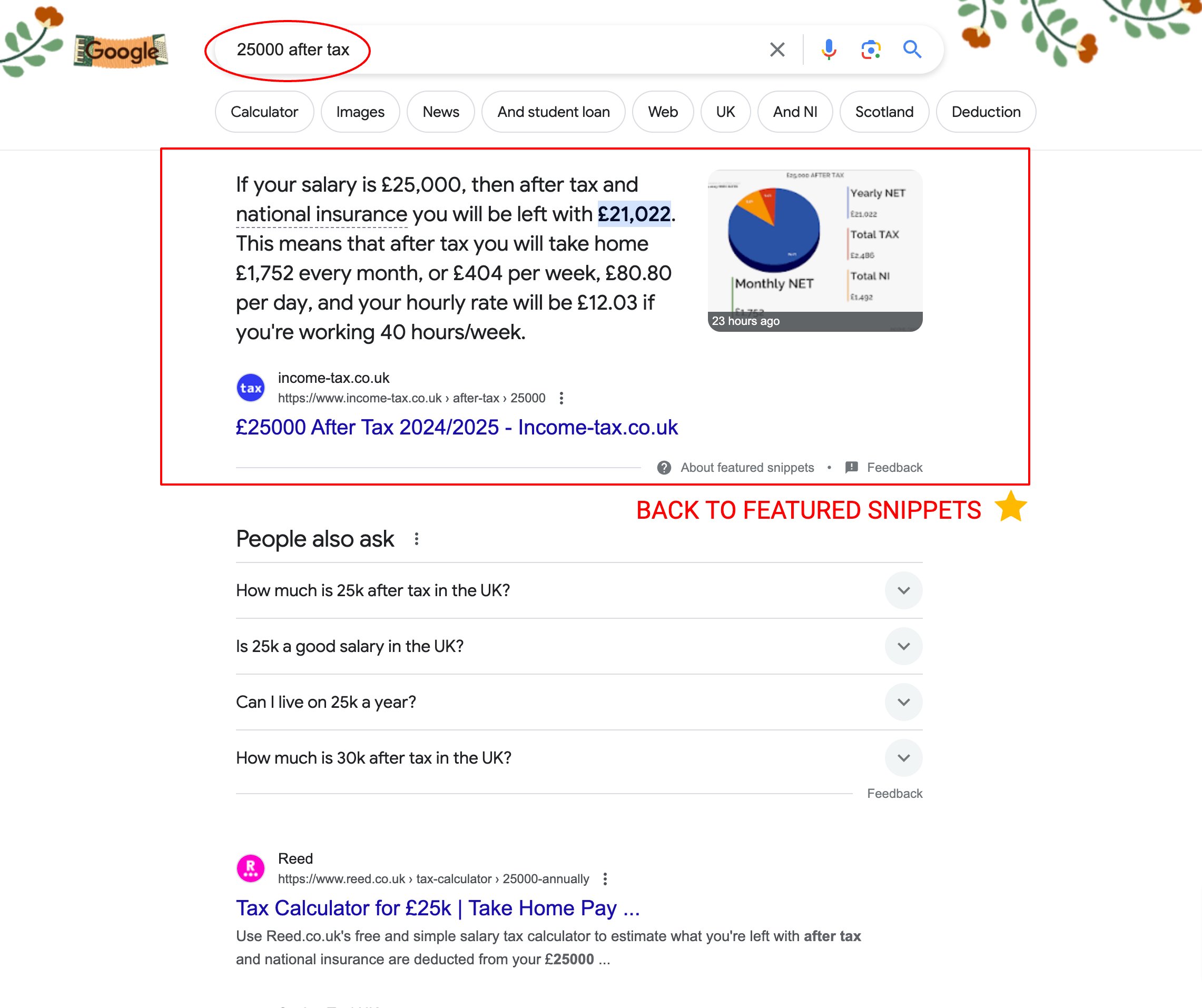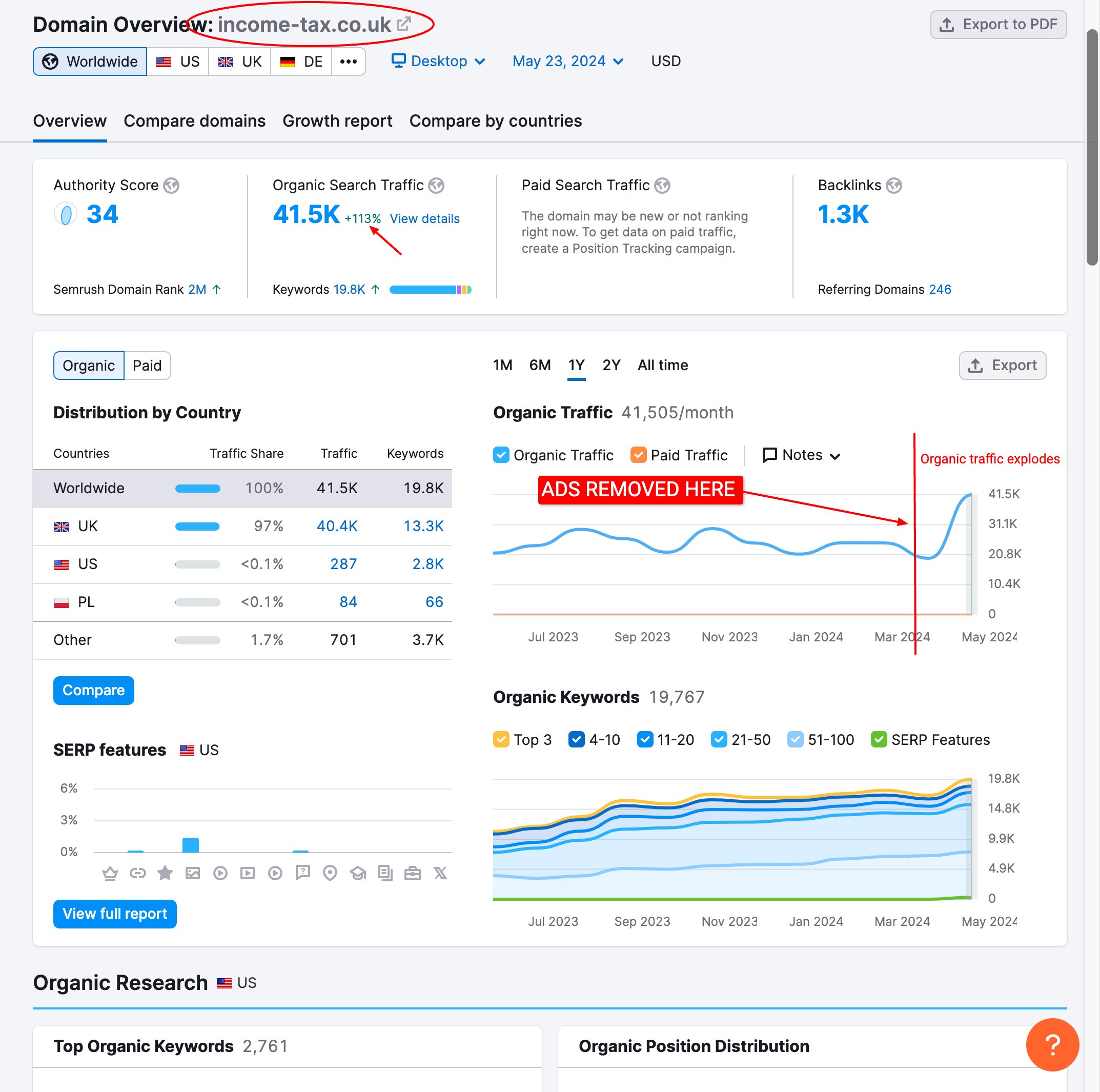Could removing ads boost your website’s organic reach?
That’s what Fery Kaszoni is claiming in a recent tweet. Kaszoni removed all ads from his income tax website, income-tax.co.uk, and also did the following:
- No content change
- No tech SEO change
- No link building
In just a few weeks, his experiment led to a 113% increase in organic traffic, which is a little mind-blowing!
Let’s go over the details in this post.
Case Study: income-tax.co.uk
Kaszoni’s experiment shows how removing ads could potentially increase organic reach:
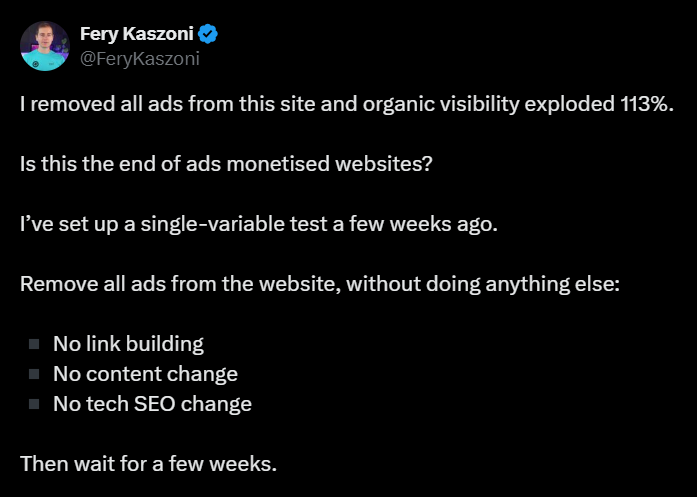
According to Kaszoni, income-tax.co.uk was once a leading tax calculator website in the UK. After a few weeks, income-tax.co.uk was on the featured snippets:
Kaszoni took all ads off his site without making any other changes. This way, he could see the exact effect of ads on organic reach. The results are surprising:
The site saw a 113% increase in organic visibility. Its keyword rankings also seem to have gotten much better, showing how a cleaner, ad-free site can improve search engine rankings.
Here are some takeaways from Kaszoni’s experiment:
- ✅Isolated variable testing: By only removing ads, Kaszoni made sure the improvements were because of this change. This shows clearly how ads affect organic reach.
- ✅Significant increase in visibility: The 113% rise in organic visibility shows the potential benefits of an ad-free or ad-minimal website. This big growth means ads, or rather too many ads or poorly placed ads, can hurt your site’s performance.
- ✅Improved keyword positions: The better keyword rankings suggest that search engines prefer sites with fewer distractions. Removing or better positioning ads can lead to better search engine results and more organic traffic.
Key Takeaway: Removing or reducing ads can lead to big improvements in organic visibility and keyword rankings.
The Impact of Ads on Organic Visibility
Why would removing ads have such a big impact on organic visibility?
To formulate some theories, I had a look at a snapshot of income-tax.co.uk from November 2023, when it still had ads. Here’s what I found:
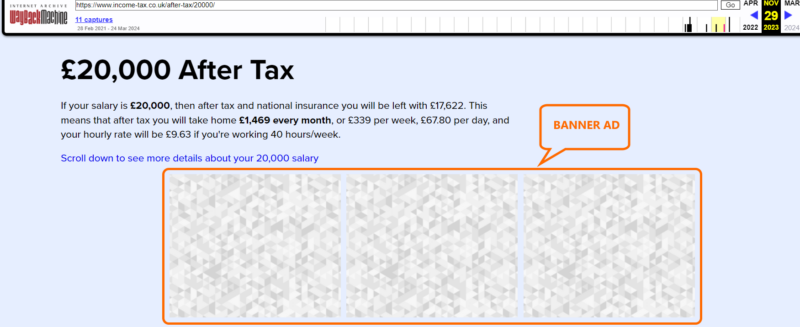
The grayed-out pixels show where ads were placed. In addition to the ad at the top, income-tax.co.uk also had banner ads spread throughout the page:
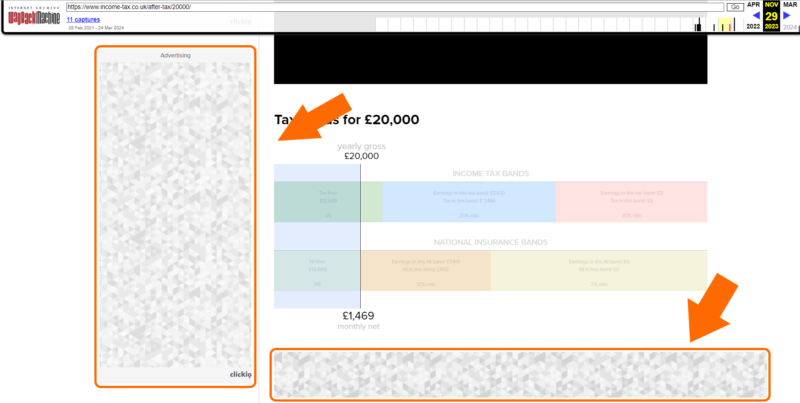
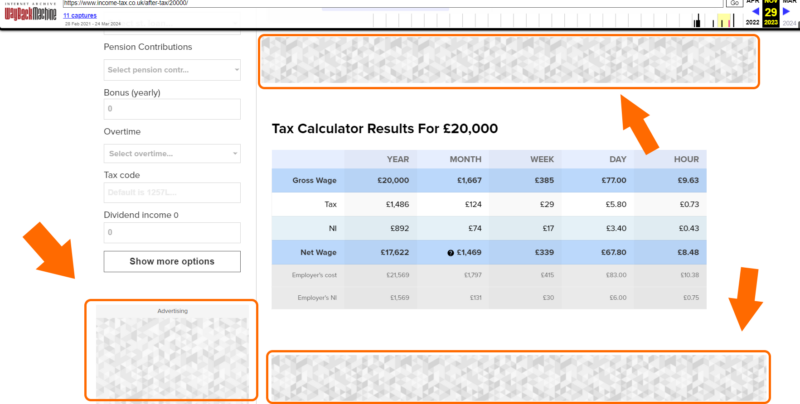
In total, this income-tax.co.uk page had 7 banner ads. It was not using Google AdSense but Clickio, which is a Google Certified Publishing Partner.
From these clues, we can deduce a few theories.
First, it’s no secret that displaying too many ads can negatively impact your site. It’s something Google considers to be a factor that can affect your website’s “page experience”:
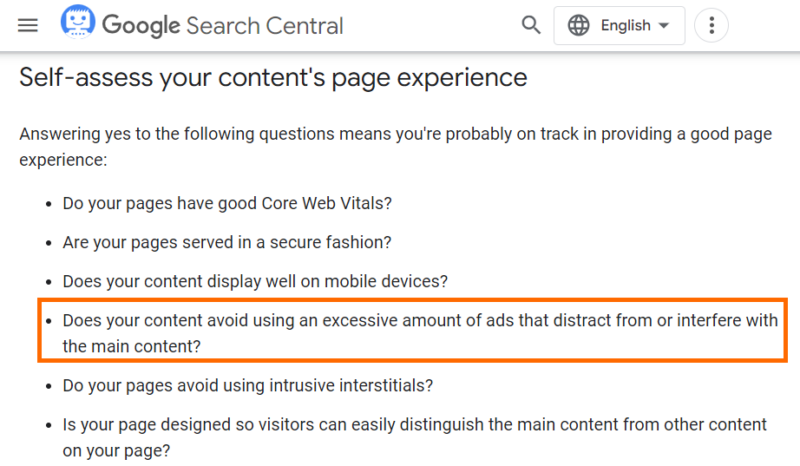
Programmatic advertising can be lucrative, but having too many ads can negatively impact user experience. As a general rule of thumb, your content-to-ad ratio should be around 4:1 or 5:1.
You should try to balance your ads with high-quality content, erring on the side of having more content than ads. That way, users aren’t bombarded with ads as soon as they click on your page.
You should also avoid:
- Auto-playing video ads
- Obtrusive pop-up ads
- Giant sticky ads
Second, ads can slow down your page load times. Slow-loading pages frustrate users and lead to higher bounce rates. Search engines also prioritize fast-loading sites, so slower pages can negatively impact your SEO.
Looking at the snapshot of income-tax.co.uk from November 2023, it seems it might have been too ad-heavy. That likely impacted its search engine performance, hence why removing the ads had such a big impact on organic traffic.
To help you understand these impacts better, here are some specific aspects to consider:
- Distraction to users: Ads can draw attention away from your primary content. This divided attention can reduce user engagement and satisfaction. Visitors may leave your site quicker, affecting your overall user metrics.
- Page load time: Ads often contain scripts and images that take time to load. This additional load time can frustrate visitors and increase bounce rates. Search engines favor faster-loading sites, so slow pages can hurt your rankings.
- Ad fatigue: Frequent exposure to ads can lead to ad fatigue, where users become less responsive to advertisements. This often results in higher bounce rates as users seek less cluttered and more informative content elsewhere.
Key Takeaway: Ads can distract your target audience and slow down your site, harming organic visibility.
Follow Google’s Helpful Content Update
Google’s Helpful Content Update aims to improve search results by focusing on user experience. It rewards sites that offer valuable, user-focused content. The March 2024 update greatly affected sites with low-quality, AI-generated content.
In fact, Google has promised to reduce unhelpful content by 45%. Many ad-heavy sites have seen drops in their rankings since the update, as Google’s algorithm now favors clean, informative pages over cluttered, ad-filled ones.
Consider these specific aspects related to Google’s Helpful Content Update:
- Focus on user experience: Google’s update favors sites that provide a better user experience. Pages filled with ads can hurt this experience. By focusing on user satisfaction, you can improve your organic search traffic.
- Penalties for ad-heavy sites: The income-tax.co.uk case suggests a link between ad presence and lower rankings. Reducing ads can help you avoid these penalties and maintain better visibility.
- Importance of Helpful Content: Google’s algorithm now rewards sites with valuable, relevant content. By removing ads and focusing on quality content, you can align with Google’s goals. This can increase engagement and lead to higher rankings and more organic traffic.
Key Takeaway: Google’s Helpful Content Update favors ad-free, user-friendly sites, boosting organic reach.
Final Word on Increasing Organic Reach
Based on the income-tax.co.uk experiment, it seems removing ads or optimizing your content-to-ad ratio can greatly improve your organic reach.
It makes the user experience better by reducing distractions and speeding up page load times. This cleaner, more focused approach can lead to higher user satisfaction and lower bounce rates.
Additionally, aligning your site with Google’s focus on helpful, user-centric content can further boost your visibility. By removing ads and focusing on quality content, you cater to both users and search engines.
Try removing ads to see how it affects your organic reach, and feel free to let me know how it goes on Twitter/X!
Related Video
If you’re ready to grow your organic traffic, Single Grain’s SEO experts can help!👇
For more insights and lessons about marketing, check out our Marketing School podcast on YouTube.
